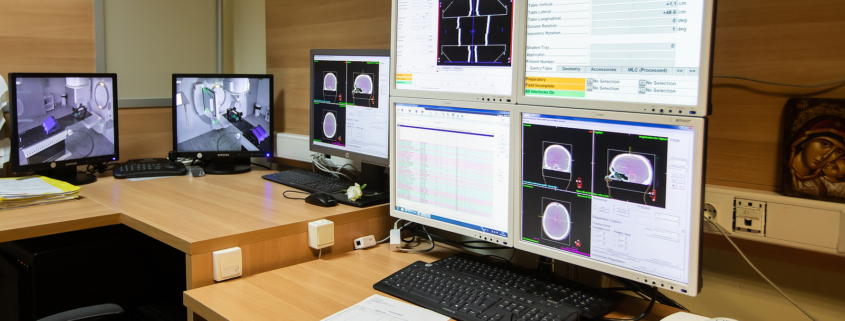The Rise of Real-Time Imaging in Radiotherapy
One of the greatest advances in radiotherapy treatments might be within reach if a study into high-performance medical image construction can be widely applied.
Radiotherapy is typically a two-step process, where someone steps into a radiotherapy centre, and has their body examined through advanced diagnostic equipment before a treatment plan is carefully put in place.
A limitation to this approach that has been around since the earliest radiotherapy treatments and earliest uses of advanced medical imaging is that it takes quite some time for the images to be reconstructed in a way that can be interpreted by specialists.
This can mean that between the medical scan and treatment, growths, lesions and tumours could have moved slightly, something that must be factored into radiotherapy treatments and can make certain more complex forms of radiotherapy more difficult.
The position of organs changes a lot, particularly when people lie down and organs sink towards the back due to the effects of gravity, as well as in the process of breathing. The longer between the scan and the treatment, the more pronounced these changes will be, and it is unfeasible for obvious reasons to stop this completely.
This is why the Gamma Knife method uses a rigid frame to hold a person’s head in place during the treatment to ensure as much accuracy as possible
The ideal approach would be to combine diagnosis and treatment into a single process, often known as online or guided radiotherapy. Here, diagnostic imaging would be updated in real-time so treatments could be highly accurate, with much less damage to surrounding healthy tissue.
A research team at Imperial College London, funded by the Institute for Cancer Research and Cancer Research UK, have published a study that reduced the amount of time needed to create a 4D-MRI image from 17 minutes to just one, with an accuracy level of 99 per cent.
This not only allows for more accurate, faster treatments but also allows for the treatment of tumours or lesions close to organs where previously the risk of collateral damage made them too dangerous to consider.
The research team intend to publish the code for the image reconstruction technique they used so it can be adopted widely, so these changes could come potentially very quickly.


